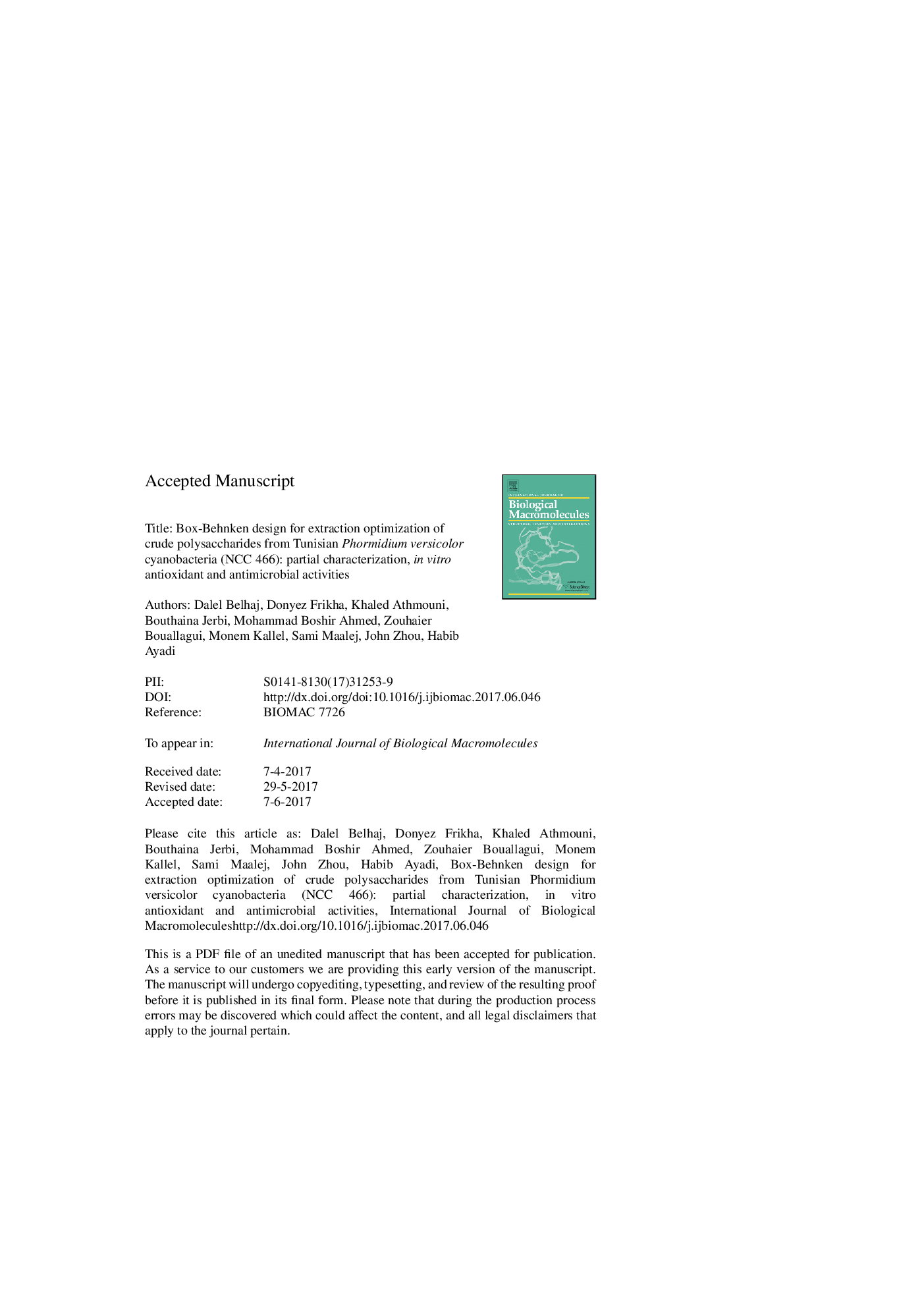| Article ID | Journal | Published Year | Pages | File Type |
|---|---|---|---|---|
| 8329228 | International Journal of Biological Macromolecules | 2017 | 27 Pages |
Abstract
In this study, response surface methodology (RSM) based on Box-Behnken design (BBD) was employed to optimize the aqueous extraction of crude polysaccharides from Tunisian cyanobacteria Phormidium versicolor (NCC 466). The optimal extraction conditions with an extraction yield of 21.56 ± 0.92% were as follows: extraction temperature at 81.05 °C, extraction time of 3.99 h, and water to raw material ratio of 21.52 mL gâ1. Crude Phormidium versicolor polysaccharides (CPv-PS) are found to be a hetero-sulfated-anionic polysaccharides that contained carbohydrate (79.37 ± 1.58%), protein (0.45 ± 0.11%), uronic acids (4.37 ± 0.19%) and sulfate (6.83 ± 0.28%). The carbohydrate fraction was composed of arabinose, xylose, ribose, rhamnose, N-acetyl glucosamine, galactose, glucose, mannose, glucuronic acid and saccharose with corresponding mole percentages of 2.41, 14.58, 2.18, 6.23, 7.04, 28.21, 26.04, 3.02, 0.86 and 5.07, respectively. Evaluation of the antioxidant activity in vitro suggested that CPv-PS strongly scavenged radicals, prevented bleaching of β-carotene and reduced activity. Furthermore, the CPv-PS exhibited effective antimicrobial properties.
Related Topics
Life Sciences
Biochemistry, Genetics and Molecular Biology
Biochemistry
Authors
Dalel Belhaj, Donyez Frikha, Khaled Athmouni, Bouthaina Jerbi, Mohammad Boshir Ahmed, Zouhaier Bouallagui, Monem Kallel, Sami Maalej, John Zhou, Habib Ayadi,
